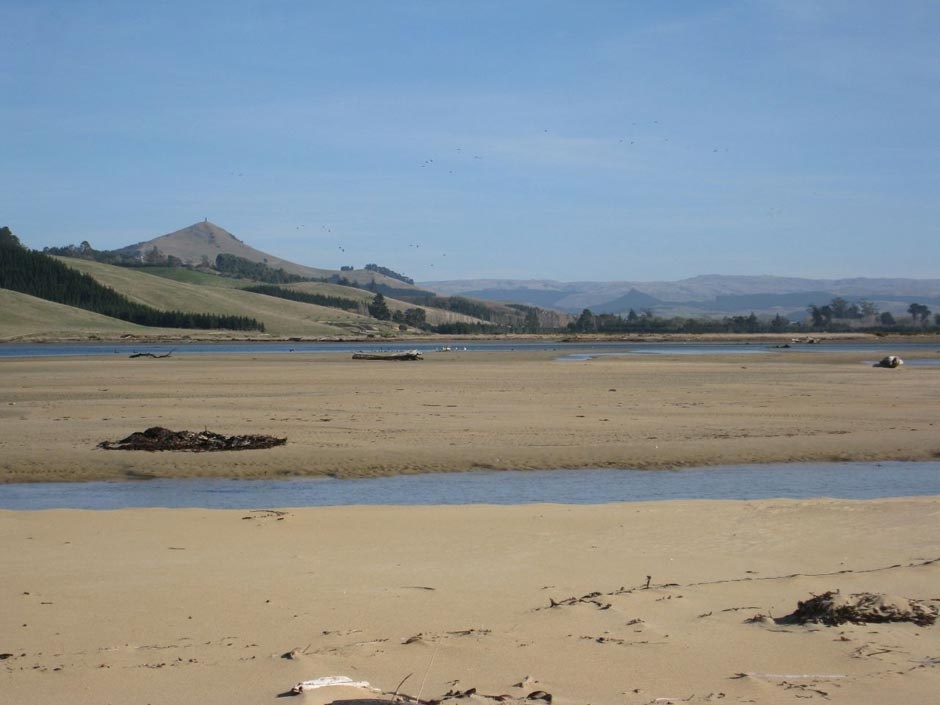
Shag River Mouth (c. 1350)
Raiding the megafauna
On the mainland the resource crises for Māori were more dramatic than at sites like Palliser Bay, as we shall see at this East Polynesian beachhead. The first colonisers favoured the coast, which escaped the climatic extremes of the southern interior and offered rich pickings. The mouth of the Shag River (Waihemo) provided shelter for canoes, marine and freshwater fisheries, a fur seal rookery nearby and vegetation attractive to moa, the south’s most attractive protein source.
So what have the archaeologists who have been probing this prime piece of archaic real estate for 130 years made of it? Investigations in the late 1980s revealed that 100-200 people arrived during the 14th century, making it a substantial village for the time. But they probably abandoned it half a century later. Why? Ovens and middens stuffed full of the remains of more than 6000 moa and countless other birds, mammals and fish offer clues. Bone layer analysis shows that moa and fur seals comprised 86% of the flesh consumed at first, but just 34% later. No one starved - there is evidence of rich pelagic fish catches, especially barracouta - but once the megafauna, the favoured moa and fur seal, became scarce, the villagers probably simply shifted to the next unexploited site. In other words, they behaved like prize-winners in a free grocery grab in a supermarket. Why fill your trolley with fresh spinach and pumpkin when spit-roasted chicken and champagne beckon from the next aisle?
Further information
This site is item number 4 on the History of New Zealand in 100 Places list.
Websites
- Department of Conservation information
- Journal of the Polynesian Society 1924 article
- Early human impact - Te Ara
- Shag River Mouth archaeological evidence
Book
- Atholl Anderson, Brian Allingham and Ian Smith (eds), Shag River Mouth, Australian National University, Canberra, 1996


Community contributions